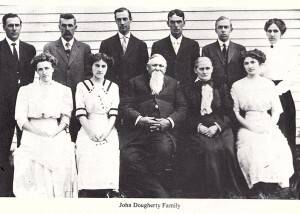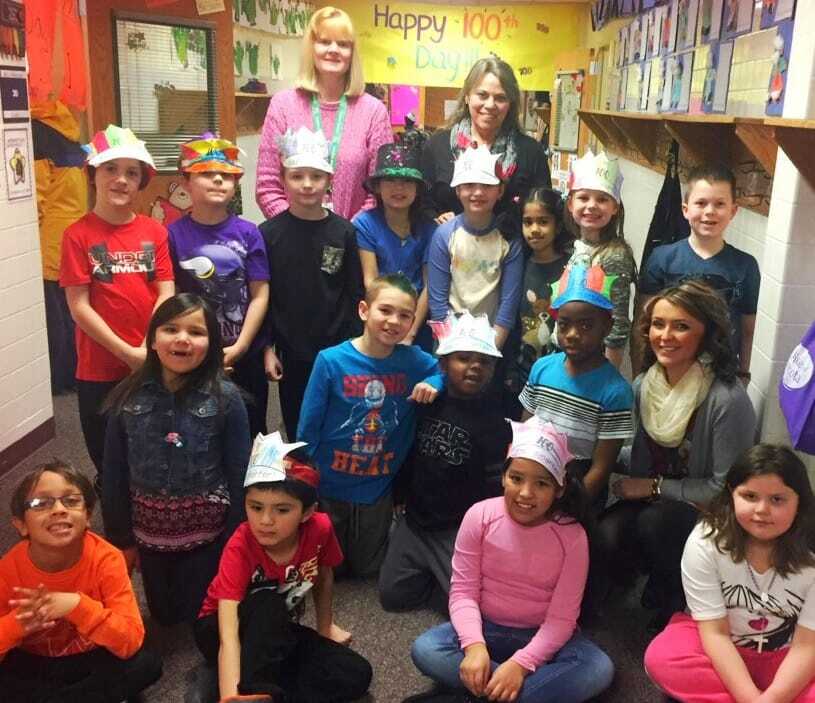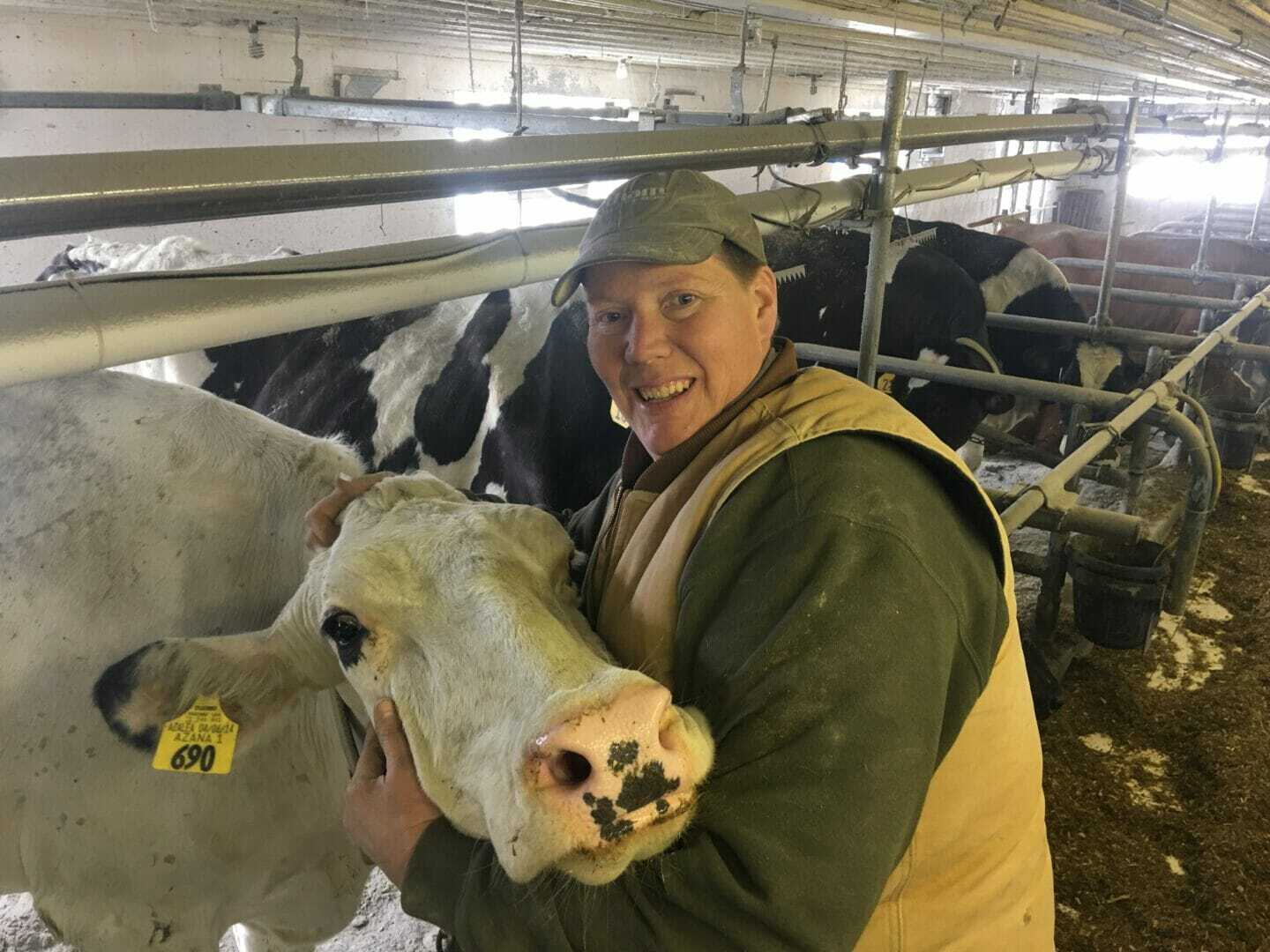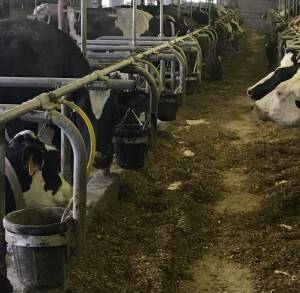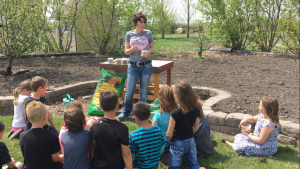 As a little girl growing up in Minneapolis, Katie Heger spent hours playing school. Her aunt was an elementary teacher, so Katie used her own school papers and assignments to teach make-believe students. This natural-born teacher received a bachelor’s degree in education from Concordia College in Moorhead, Minn., and a master’s degree in administration.
As a little girl growing up in Minneapolis, Katie Heger spent hours playing school. Her aunt was an elementary teacher, so Katie used her own school papers and assignments to teach make-believe students. This natural-born teacher received a bachelor’s degree in education from Concordia College in Moorhead, Minn., and a master’s degree in administration.
In 2000, Katie got married and became part of Heger Family Farms in Underwood, North Dakota.
“There are no two days that are alike on the farm. There are no two days alike in the classroom,” says Katie, who enjoys teaching all students, but finds middle and high school her best fit. She also has served as elementary school principal. “I’ve learned to think outside the box to teach students skill sets and life lessons at the same time. Relating new information to real life is vital to our upcoming generations.”
Katie applies this same philosophy to raising her family and advocating. She and her husband, Steven, are raising five children on their family farm, which will celebrate its centennial in 2019. This third generation farm family also has the distinction of being the first North Dakota residents to move back onto mined land after the coal was removed and land reclaimed.
 The Heger children learn business skills and the importance of philanthropy by raising sweet corn and selling it at a roadside stand. A sign on their stand reads, “Grow It Forward,” which explains what they do. Half of the proceeds get donated each year to a community group. Katie presents three organizations for her children’s consideration, and they decide where to donate the money. Recipients have included a crisis care center for battered women, a non-profit daycare, and their local food pantry.
The Heger children learn business skills and the importance of philanthropy by raising sweet corn and selling it at a roadside stand. A sign on their stand reads, “Grow It Forward,” which explains what they do. Half of the proceeds get donated each year to a community group. Katie presents three organizations for her children’s consideration, and they decide where to donate the money. Recipients have included a crisis care center for battered women, a non-profit daycare, and their local food pantry.
Another way Katie gives back to her community is through the annual Harvest Hike. This August will mark the third 5K race that she’s organized to teach people about agriculture while raising money for a local charity. People have come from 60 miles to participate. Their $15 donation gets them a swag bag filled with North Dakota foods including beef and honey sticks, pasta, pancake mix, ag magazines and recipes.
Katie also speaks to civic and agricultural groups alike. She volunteers at the local food pantry. She supports the local library and has led farm-related activities as part of story time. She also hosts second graders on farm tours. During last spring’s farm tour, Katie read a story entitled “First Peas to the Table.”
This American Farm Bureau Federation “Book of the Year 2016” tells the story of a school contest to see which student can grow the first peas of the season as they study Thomas Jefferson and his contributions to agriculture. After reading the story, Katie helped students plant peas. She also gave each student his/her own copy of the book.
 “Advocating came naturally,” explains Katie, a member of North Dakota CommonGround. CommonGround volunteers foster conversations about how food is grown. These FarmHers share their personal stories to bridge the communication gap between producers and consumers. “Everything was exciting to me when I moved to the farm, and I believed my family and my friends back home would be excited to learn more about agriculture, too. I started sharing our story. Then I realized I could do more. I decided to go into classrooms and get more involved in our local community to help correct misperceptions about farming. Now I use social media to help connect with consumers.”
“Advocating came naturally,” explains Katie, a member of North Dakota CommonGround. CommonGround volunteers foster conversations about how food is grown. These FarmHers share their personal stories to bridge the communication gap between producers and consumers. “Everything was exciting to me when I moved to the farm, and I believed my family and my friends back home would be excited to learn more about agriculture, too. I started sharing our story. Then I realized I could do more. I decided to go into classrooms and get more involved in our local community to help correct misperceptions about farming. Now I use social media to help connect with consumers.”
With her passion for advocacy, her commitment to local organizations and her involvement with their family farm, it’s no wonder Katie was selected as 2016 Northwest Region Farm Mom of the Year.
“What I enjoy most about being involved with our family farm is that we’re all in it together. Our family is a team. Our kids are learning true life skills from doing everything from changing tires to building fence. They’ve learned the animals must be fed before they feed themselves. They’re developing empathy,” says Katie. “Whether they come back to our farm or not, these are the soft skills that you can’t necessarily learn from a text book or in a classroom. The farm fosters creativity and nurtures kids’ curiosity. Some of my kids are engineers. We have the items around to foster the mechanics and the builders. They can entertain themselves for hours with electrical tape, duct tape and random pieces of wood.”
Just as the farm nurtures each child, Katie believes 4-H helps her kids further explore their interests and develop life skills. Four of her five children are old enough to be members of 4-H, and Katie serves as their 4-H club leader. They have goat and bottle calf projects. They also choose other 4-H projects including woodworking, agronomy, horticulture, welding, food and nutrition, as well as sewing. The Heger’s oldest daughter also participates in the Hippology competition.
“Honoring the past, working today and preparing for the future” is Heger Farms motto. It’s clear Steven and Katie are living that motto as they raise their five children: Ben, 15; Libby, 13; Chris, 9; Nellie, 7; and Piper, 4.
Not only does each child have his/her own farm chores, but they participate in extracurricular school activities. Between volleyball, football, basketball, track, volunteering, livestock and planting, fall and spring are especially busy seasons. Katie often relies on freezer meals, which she prepares during slower seasons, or quick crockpot meals to keep her family fed and fueled when the days are especially busy. Today she’s sharing a few of her family’s favorite meals to help you get through this busy season, too!




